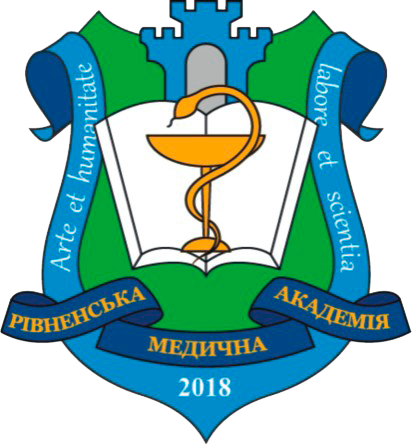VERTEBRAL HEMODYNAMICS AND REACTIVITY OF VERTEBRAL BLOOD FLOW IN PATIENTS WITH CERVICOGENIC HEADACHE
DOI:
https://doi.org/10.32782/health-2024.2.6Keywords:
cervicogenic headache, vertebral hemodynamics, cerebrovascular reactivity, instability of the cervical spine, Kimmerli anomaly.Abstract
Clinical and Doppler examination of 146 patients with cervicogenic headache (CH) in two clinical groups was carried out (group 1 – cervicocranialgia (CCA) – 82 patients; group 2 – posterior neck sympathetic Barre-Lieu syndrome (BLS) – 64 patients). The indicators of peak systolic (Vs), time-averaged maximum (TAMX) and end-diastolic (Vd) blood flow velocities in the V4 segments of the vertebral (VA), posterior (PCA) cerebral, and basilar (BA) arteries, indices of reactivity to rotary samples with rotation of the head to the left and right (IrlpRP) and loading with flexion and extension (IrfeRP). The indicators of TAMX, IrlpRP and IrfeRP were also compared in groups with stair instability (SI), isolated instability (II), Kimmerli anomaly (KA). Control group (CG) – 50 clinically healthy volunteers of both sexes of the appropriate age. Blood flow indicators for VA and BA were significantly increased in patients of both groups. In patients with CCA, asymmetry of blood flow in the VA was noted in 25.5% of cases, vasospasm in one VA – in 27.9%, vasospasm in both VA – in 57.0%, vasospasm in BA - in 61.8%. Asymmetry of blood flow in VA was noted in 39.1% of patients with BLS, vasospasm in one VA – in 51.5%, vasospasm in both VA – in 32.8%, vasospasm in BA – in 60.9%. In the patients of the 1st group, an increase in reactivity to rotational loads was noted. In the 2nd group, the indicators of IrlrRP exceeded the data of the 1st group. In patients with SI, there was a significant excess of flow rate indicators in VA and BA over CG. In the case of II, an increase in the blood flow rate in the VA was observed, with a slight predominance in patients of the 2nd group. Blood flow velocities were slightly elevated in patients with KA. In patients with SI, pronounced hyperreactivity to functional loads with extension and flexion was noted. Hyperreactivity to functional loads with rotation to the right and left prevailed in patients with II. Hyperreactivity to functional loads with extension and flexion was observed in the group with KA, with relative normoreactivity to rotation to the right and left. Conclusions. In the group of patients with CCA, generalized vasospastic reactions prevail. The occurrence of BLS was due to vasospasm in one VA, as well as a combination of vasospasm in OA and one VA. Hyperreactivity to rotary functional tests is a dopplerographic criterion of CH, with the greatest expression in patients with BLS. In patients with SI, hyperreactivity to rotational tests was noted, which was combined with vasospasm in both VA or in one VA and BA. In patients with IN, hyperreactivity during rotational loads was combined with the presence of vasospasm in one VA. In patients with Kimmerli anomaly, hyperreactivity to flexion and extension tests prevailed without significant changes in vertebral hemodynamics.
References
Florencio, L.L., de Oliveira, A.S., Pinheiro, C.F., Will-Lemos, T., Dach, F., Fernández-de-Las-Peñas, C., & Bevilaqua-Grossi, D. (2021). Comparison of cervical muscle isometric force between migraine subgroups or migraine-associated neck pain: a controlled study. Sci Rep, Jul 29, 11 (1), 15434. DOI: 10.1038/s41598-021-95078-4.
Barmherzig, R., & Kingston, W. (2019). Occipital Neuralgia and Cervicogenic Headache: Diagnosis and Management. Curr Neurol Neurosci Rep, Mar 19, 19 (5), 20. DOI: 10.1007/s11910-019-0937-8.
Fredriksen, T.A., Antonaci, F., & Sjaastad, O. (2015). Cervicogenic headache: too important to be left un-diagnosed. J Headache Pain, 16, 6. DOI: 10.1186/1129-2377-16-6.
Bogduk, N. (2014). The Neck and Headaches. Neurol Clin, May, 32 (2), 471–487. DOI: http://dx.doi.org/ 10.1016/j.ncl.2013.11.005.
Noseda, R., Melo-Carrillo, A., Nir, R.R., Strassman, A.M., & Burstein, R. (2019). Non-trigeminal nociceptive innervation of the posterior dura: implications to occipital headache. J Neurosci, 39, 1867–1880.
Antonaci, F., Ghirmai, S., Bono, G., Sandrini, G., & Nappi, G. (2001). Cervicogenic headache: evaluation of the original diagnostic criteria. Cephalalgia, 21, 573–583.
Bulut, M.D., Alpayci, M., Şenköy, E., Bora, A., Yazmalar, L., Yavuz, A., & Gülşen, İ. (2016). Decreased Vertebral Artery Hemodynamics in Patients with Loss of Cervical Lordosis. Med Sci Monit, 22, 495–500.
Kalashnikov, V.I. (2016). Cerebral hemodynamics and cerebrovascular reactivity in patients with vertebrogenic cervicocranialgia. INTER COLLEGAS, 3 (4), 185–189.
Kalashnikov, V.I., Stoyanov, O.M., Bakumenko, I.K., Kalashnikova, I.V., & Badiuk, N.S. (2021). Reactivity of brain blood flow in patients with various types of headache. PhOL.Archives, 3, 235–243. http://pharmacologyonline.silae.it ISSN: 1827-8620.
Stoyanov, A.N., Kalashnikov, V.I., Vastyanov, R.S., Pulyk, A.R., Son, A.S., & Kolesnik, O.O. (2022). State of autonomic regulation and cerebrovascular reactivity in patients with headache with arterial hypertension. Wiad Lek, 75 (9 p2), 2233–2237. DOI: 10.36740/WLek202209210.





